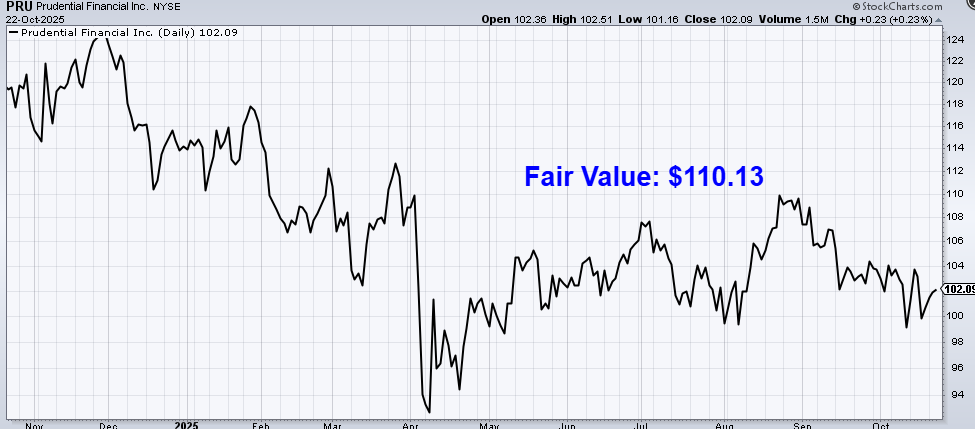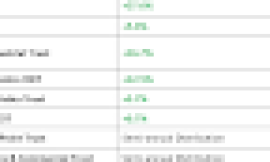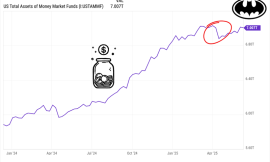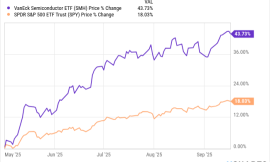One of the saddest things I come across is the sight of poverty in old age.
Poverty in one’s youth can often be overcome through hard work and the power of time.
But when one is old, one has limited physical horsepower, time, and options.
This is why it’s so crucial to save and invest throughout one’s life, starting as young as possible.
And when investing, one has to pick a strategy and take a targeted approach; otherwise, one will be all over the place and likely experience poor results.
The best strategy I know of is dividend growth investing.
This is a long-term strategy designed around the idea of buying and holding shares in high-quality businesses paying safe, growing dividends to shareholders.
These growing dividends can form the bedrock of the passive income necessary to achieve financial independence.
And since growing dividends are only sustainable when funded by growing profits, and since steadily growing profit is a hallmark of a great business, this strategy tends to filter investors right into some of the best businesses and investments out there.
You can find hundreds of businesses that qualify for this strategy over on the Dividend Champions, Contenders, and Challengers list.
This list has compiled rich data on US-listed stocks which have raised dividends each year for at least the last five consecutive years.
I’ve been using the dividend growth investing strategy for 15 years now, and it’s changed my life.
It guided me as I’ve gone about building the FIRE Fund.
That’s my real-money portfolio generating enough five-figure passive dividend income for me to live off of.
Actually, I’ve been able to live off of this passive dividend income since I quit my job and retired in my early 30s.
How was I able to do that?
Well, you can read all about it in my Early Retirement Blueprint.
Now, the dividend growth investing strategy involves not only investing in the right businesses but also investing at the right valuations.
And that’s because price is only what you pay, but value is what you get.
An undervalued dividend growth stock should provide a higher yield, greater long-term total return potential, and reduced risk.
This is relative to what the same stock might otherwise provide if it were fairly valued or overvalued.
Price and yield are inversely correlated. All else equal, a lower price will result in a higher yield.
That higher yield correlates to greater long-term total return potential.
This is because total return is simply the total income earned from an investment – capital gain plus investment income – over a period of time.
Prospective investment income is boosted by the higher yield.
But capital gain is also given a possible boost via the “upside” between a lower price paid and higher estimated intrinsic value.
And that’s on top of whatever capital gain would ordinarily come about as a quality company naturally becomes worth more over time.
These dynamics should reduce risk.
Undervaluation introduces a margin of safety.
This is a “buffer” that protects the investor against unforeseen issues that could detrimentally lessen a company’s fair value.
It’s protection against the possible downside.
Steadily buying undervalued high-quality dividend growth stocks over the course of life can build significant wealth, create immense passive income, unlock financial independence, and prevent poverty in old age.
The preceding section on valuation does, of course, assume that there’s an understanding of the concept already in place.
If that’s not the case, Lesson 11: Valuation is very much worth a read.
Written by fellow contributor Dave Van Knapp, it describes what valuation is, how it works, and how to apply simple tools in an effort to estimate the fair value of almost any dividend growth stock out there.
With all of this in mind, let’s take a look at a high-quality dividend growth stock that appears to be undervalued right now…
Prudential Financial, Inc. (PRU)
Prudential Financial, Inc. (PRU) is a US-based global insurance company that offers life insurance, annuities, investment management, retirement plan services, and other financial products and services.
Founded in 1875, Prudential is now a $36 billion (by market cap) financial titan that employs approximately 38,000 people.
The company serves ~50 million customers across 50 different countries.
Prudential reports operations across the following four segments: U.S. Businesses, 48% of FY 2024 pretax segment operating profit; International Businesses, 40%; and Investment Management, 11%.
Over the past 150 years, Prudential has slowly and steadily turned into one of the world’s largest insurance/investment companies.
To this point, Prudential’s longevity and success has much to do with how it has combined two wonderful and complementary businesses together.
The first business, which seeds the other side, is insurance.
Since insurance involves the collecting of premiums today for the assumption of risk, with payment on claims potentially coming much later on (especially in life insurance), the business model naturally results in accruing what’s known as a “float”.
The float, which is low-cost, “sticky” source of capital that accumulates between collection and payment, is able to be invested, earning investment income for the firm which builds on the profit (the spread between premiums collected and claims paid) from core insurance underwriting.
Managing risk is part of the insurance business model, making investment management (which also involves managing risk when allocating capital) a good fit.
And when an insurance company builds scale and reputation internally (i.e., from the float), it makes a lot of sense to open that up externally and scale further.
That leads us to Prudential’s massive investment management arm (known as PGIM), which is the second business housed under one roof.
Calling it massive is not an overstatement: Prudential has $1.6 trillion in assets under management.
With global assets worldwide growing in value over time, powered largely by capitalism and compounding, Prudential is able to leverage this “rising tide lifting all boats” and earn rising fees (because the underlying, fee-earning asset base is rising).
Importantly, Prudential is doing this through a self-reinforcing mechanism, whereby the success regarding investment management aids in the success across insurance and retirement products, and external investment management helps with internal investment management, enhancing the scale, expertise, and brand power of the whole firm.
Success begets success.
It’s worked for 150 years, and I don’t see why it won’t work for another 150 years.
That should translate to rising revenue, profit, and dividends for many years to come.
Dividend Growth, Growth Rate, Payout Ratio and Yield
Prudential has already increased its dividend for 17 consecutive years.
Its 10-year dividend growth rate of 9.1% is very strong, although this is heavily skewed by a couple of outsized dividend raises earlier on.
The five-year dividend growth rate of 5.4% is, in my mind, a much more accurate representation of Prudential’s dividend growth path, and it’s closer to the ~5% dividend growth rate management advertises.
But having an expectation of mid-single-digit dividend growth is not bad at all when you see the stock yields a market-smashing 5.3%.
Pairing a 5%+ yield with a 5%+ dividend growth rate gets you to a 10%+ annualized total return in a pretty straightforward manner (assuming no major valuation compression), with about half of it coming in the form of that dividend income.
This 5.3% yield, by the way, is 60 basis points higher than its own five-year average.
This is a stock that usually offers a healthy yield, but it’s currently quite a bit healthier than normal.
And with the payout ratio at 41%, based on after-tax adjusted operating income per share, the dividend looks very sustainable with plenty of room to head higher.
The dividend profile here is almost perfectly balanced between income and growth, giving you a nice dose of both.
Revenue and Earnings Growth
As balanced and nice as it may be, though, this profile is largely based on data from the past.
However, investors must always be thinking about the future, as the capital of today ultimately gets risked for the rewards of tomorrow.
As such, I’ll now build out a forward-looking growth trajectory for the business, which will be instrumental when it comes time to estimate fair value.
I’ll first show you what the business has done over the last decade in terms of its top-line and bottom-line growth.
And I’ll then reveal a professional prognostication for near-term profit growth.
Lining up the proven past with a future forecast in this manner should give us what we need to gauge where the business might be going from here.
Prudential advanced its revenue from $57.1 billion in FY 2015 to $70.4 billion in FY 2024.
That’s a compound annual growth rate of 2.4%.
Top-line growth is modest, reflecting Prudential’s maturity.
Because the company is so large, and because its markets are so competitive, Prudential’s growth is likely to be somewhat constrained.
Prudential’s GAAP earnings per share varies from year to year, making it challenging to pin down its growth course.
What I did here is, I used the company’s preferred metric of after-tax adjusted operating income.
Prudential increased its AOI from $4.2 billion in FY 2015 to $4.6 billion in FY 2024.
When we account for the large drop in the outstanding share count (~22%) over this period, the per-share compound annual growth rate comes out to 3.8%.
If we zoom into the most recent quarter, we can see that AOI/share grew by 9.1% YOY.
In my view, Prudential’s operating EPS is likely growing at a mid-single-digit rate over time.
And that’s not bad at all, particularly when you consider that starting yield of over 5%, as this framework is supportive of continued 5%+ dividend growth.
Looking forward, CFRA believes that Prudential will compound its EPS at an annual rate of 7% over the next three years.
Clarifying things, CFRA uses operating EPS throughout its report, which cuts through the GAAP variances.
CFRA has a: “…favorable view of [Prudential]’s varied product offerings, geographic diversification, and prominent market positions in its lines of businesses.”
CFRA also notes that Prudential: “…has several attractive franchises in the asset management and retirement savings space…”
However, CFRA’s enthusiasm is tempered by uneven results, inconsistent growth, and mixed flows.
Regarding that last point, PGIM recorded total net flows of just $0.4 billion in Q2 FY 2025, which is tepid in comparison to some of the industry giants out there.
Also, despite PGIM’s size, it greatly trails larger players in the asset management space (such as BlackRock, Inc. (BLK), which has over $13 trillion in AUM).
PGIM just doesn’t have the dynamic lines and options that major managers have.
Notable large asset management firms are both managing more money and recording larger inflows, relative to PGIM.
On the other hand, Prudential is still a massive firm, and it’s not suffering consistent outflows (which is plaguing some other legacy firms in this space).
Additionally, Prudential is more diversified than large asset management firms, bolstered by insurance, annuities, and retirement products.
It’s not completely fair to compare Prudential to straight-up asset managers.
Prudential’s management recently introduced financial targets through 2027, projecting annual core EPS growth of 5% to 8% and an adjusted ROE of 13% to 15%.
This jibes with the 7% number, and it’s possible this is where CFRA is getting its cue.
Regardless of how close Prudential gets to this 7% growth rate over the near term, I don’t see anything to indicate that Prudential can’t or won’t grow its AOI/share at a mid-single-digit rate over longer stretches of time.
That would position the dividend for like growth on a go-forward basis.
With the yield sitting at over 5%, income-leaning investors have a favorable setup.
Financial Position
Moving over to the balance sheet, Prudential has a solid financial position.
The long-term debt/equity ratio is 0.7.
The company’s long-term senior debt has the following investment-grade credit ratings: A, Standard & Poors; A3, Moody’s; A-, Fitch.
Prudential ended last year with about $19 billion in long-term debt, which is not all that concerning for a company of this magnitude.
Profitability is decent.
Return on equity has averaged 5.7% over the last five years, while net margin has averaged 3.5%.
Circling back around to the point I made earlier on GAAP variances, ROE swings wildly from year to year.
In better years, ROE lands at about 11% or so, which is quite respectable for the business model.
Furthermore, there’s the near-term guidance on adjusted ROE (tethered to AOI, rather than GAAP net income), painting a picture of mid-teens ROE, which is rather strong and certainly competitive for the field.
Overall, this is just a good (albeit not amazing) business humming along, growing at a mid-single-digit rate, and richly rewarding shareholders.
And with economies of scale, “sticky” assets, brand recognition, and established policies in force, the company does benefit from durable competitive advantages.
Of course, there are risks to consider.
Regulation, litigation, and competition are omnipresent risks in every industry.
While litigation isn’t a major risk, regulation and competition are magnified in Prudential’s space.
The company’s size and maturity are assets (giving it scale and a reputational halo), but these characteristics also work against it in terms of how much and how fast the firm can grow.
The company’s AUM is subject to volatile global asset markets, meaning the base upon which Prudential charges fees (and, thus, the fees) can be volatile.
Further pressuring fees, the investment management industry as a whole is facing a secular move toward passive instruments with lower fees.
Underwriting must remain prudent, but the long-term nature of life insurance (COGS isn’t known until well into the future) makes underwriting prudence difficult to assess in the present.
The company is exposed to interest rates.
A global footprint offers geographic diversification, but it also adds exposure to geopolitics and fluctuating currency exchange rates.
Prudential has its fair share of risks, but the 150 years of operating history speaks to the company’s ability to properly manage these risks.
And with the valuation being as undemanding as it is, the risk-reward situation looks appealing…
Valuation
The P/E ratio is 7.7, based on TTM AOI/share.
That’s an incredibly low multiple, being far below the broader market and comparing favorably to the stock’s own five-year average P/E ratio of 13.7 (albeit with that average incorporating GAAP earnings).
We can also do this another way.
A common method for gauging an insurer’s valuation is to look at the multiple of book value.
Well, in this case, the P/B ratio of 1.2, which is roughly in line with its own five-year average, is very low in this environment, with many insurers out there commanding ratios of over 2 (and higher-quality asset managers commanding ratios of over 3).
And the yield, as noted earlier, is significantly higher than its own recent historical average.
So the stock looks cheap when looking at basic valuation metrics. But how cheap might it be? What would a rational estimate of intrinsic value look like?
I valued shares using a dividend discount model analysis.
I factored in a 10% discount rate and a long-term dividend growth rate of 5%.
If you’ve been following along, you shouldn’t be surprised here.
I’ve been telegraphing this whole time that Prudential is, by all appearances, growing its bottom line and EPS at roughly a mid-single-digit rate.
Near-term EPS growth may include some modest acceleration, but management advertises a 5% dividend growth rate.
When management hangs a sign out front like that, I think it’s reasonable to have that as a baseline expectation.
I wouldn’t mind seeing something better than 5%, but I’d also rather err on the side of caution and be pleasantly surprised by a better outcome.
Overall, in my view, it’s prudent to assume a 5% dividend growth rate out of Prudential.
The DDM analysis gives me a fair value of $113.40.
The reason I use a dividend discount model analysis is because a business is ultimately equal to the sum of all the future cash flow it can provide.
The DDM analysis is a tailored version of the discounted cash flow model analysis, as it simply substitutes dividends and dividend growth for cash flow and growth.
It then discounts those future dividends back to the present day, to account for the time value of money since a dollar tomorrow is not worth the same amount as a dollar today.
I find it to be a fairly accurate way to value dividend growth stocks.
After running it through what I think is a fair, if conservative, valuation model, the stock shakes out looking mildly inexpensive.
But we’ll now compare that valuation with where two professional stock analysis firms have come out at.
This adds balance, depth, and perspective to our conclusion.
Morningstar, a leading and well-respected stock analysis firm, rates stocks on a 5-star system.
1 star would mean a stock is substantially overvalued; 5 stars would mean a stock is substantially undervalued. 3 stars would indicate roughly fair value.
Morningstar rates PRU as a 3-star stock, with a fair value estimate of $107.00.
CFRA is another professional analysis firm, and I like to compare my valuation opinion to theirs to see if I’m out of line.
They similarly rate stocks on a 1-5 star scale, with 1 star meaning a stock is a strong sell and 5 stars meaning a stock is a strong buy. 3 stars is a hold.
CFRA rates PRU as a 3-star “HOLD”, with a 12-month target price of $110.00.
We’re all in the same ballpark on this one. Averaging the three numbers out gives us a final valuation of $110.13, which would indicate the stock is possibly 7% undervalued.
Bottom line: Prudential Financial, Inc. (PRU) is a large, successful company that has combined complementary insurance and asset management businesses under one roof. It’s been going strong for 150 years, and it looks better than ever. With a market-smashing yield, a reasonable payout ratio, mid-single-digit dividend growth, nearly 20 consecutive years of dividend increases, and the potential that shares are 7% undervalued, long-term dividend growth investors looking for a nice balance of income and growth should seriously consider this idea right now.
-Jason Fieber
Note from D&I: How safe is PRU‘s dividend? We ran the stock through Simply Safe Dividends, and as we go to press, its Dividend Safety Score is 75. Dividend Safety Scores range from 0 to 100. A score of 50 is average, 75 or higher is excellent, and 25 or lower is weak. With this in mind, PRU‘s dividend appears Safe with an unlikely risk of being cut. Learn more about Dividend Safety Scores here.
P.S. If you’d like access to my entire six-figure dividend growth stock portfolio, as well as stock trades I make with my own money, I’ve made all of that available exclusively through Patreon.
Disclosure: I’m long PRU.




